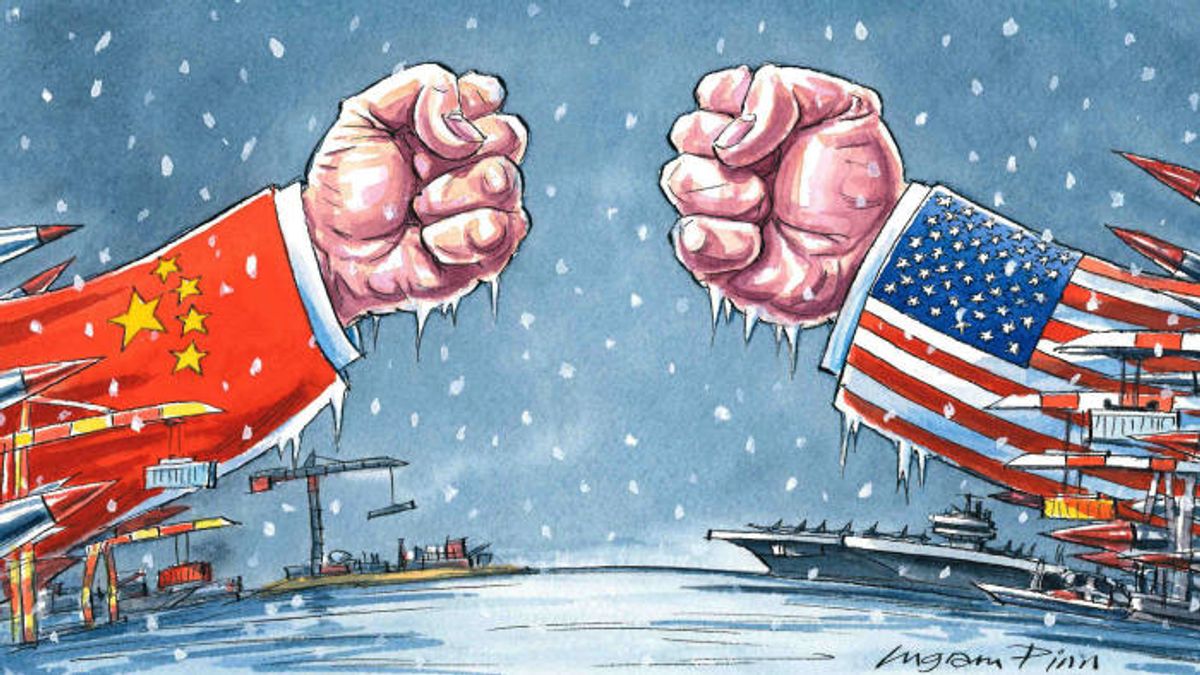US Ability To Con Should Not Be Underestimated
(China) on 11 June 2021
by Wang Yiwei (link to original)
Why should we "despise strategically"? While Europe's allies are reducing their reliance on Chinese supply chains, they are simultaneously reducing their reliance on the U.S. An example of this is the recent increased investment in semiconductors by the German company Bosch.
Indeed, European countries are nervous about China's competitive power, but they don't wholly sympathize with the U.S. or consider China a common enemy, because that violates market principles and the rhythm of economic globalization. China rose up by the standards of globalization. If the U.S. wants to destroy the fundamentals of the global economy and place political strategy above economic foundations, that's clearly not viable. In the U.S., apart from strategic military companies that still lend an ear to Washington, most American companies don't want to decouple with China, because that would upset global supply chains and increase their costs. They would only see their competition grow.
Why "take him seriously tactically"? The U.S. is precisely and systematically pushing for the "de-Sinicization" of global supply chains. The Biden administration has shifted away from the Donald Trump era's style of highly public, lone wolf combativeness, and has switched to a slow-burn tactic, like trying to boil a frog slowly. It is systematically and ingeniously pushing its allies to decouple from us in the production of key components and at key steps of industrial supply chains, in an attempt to lock China into these chains' low- and mid-stages, thereby preventing China from surpassing the U.S.
Once the U.S. locks onto a major competitor, it works hard to mount a response. After four years under Trump, Washington has already moved from constructing a Chinese threat to the process of responding to it. From top to bottom, in the U.S. today, people are already accustomed to using fear and concern over China to shift focus onto the Chinese threat and cover up U.S. domestic issues.
The United States system of alliances has already transitioned from a focus on military security to new geopolitical conflicts centered around supply chains, and has become an alliance of technology and trade regulations. The U.S. ability to coerce its allies is substantial and should not be underestimated. The key in this political chess match is the relationship among China, the U.S. and Europe. What the U.S. is most concerned about is a Chinese-European alliance, not a Chinese-Russian one. If China and Europe reach an investment agreement, it will connect the supply chains of Europe with East Asia, and will offset the quadrilateral alliance of the U.S., Japan, India and Australia. Therefore, the U.S. will certainly try everything it can to disrupt a Chinese-European investment agreement.
The Biden administration has also systematically, professionally and precisely restricted its national security concerns within technology fields like 5G, artificial intelligence, advanced semiconductors and quantum computing, and done its best to reach consensus on these issues with its allies. According to U.S.-EU summit draft documents obtained in advance by Western media, the U.S. and the EU plan to establish a shared U.S.-European trade and technology council, which will open up cooperation and establish cross-Atlantic standards in A.I., net safety, competition and data administration. At the same time, Washington is also pursuing a "Five Eyes Plus" model, continuing to promote its Indo-Pacific strategy and leading the restructuring of global industrial chains. Moves like these are aimed at curbing China's growth and creating an image of the U.S. as the next generation's leader in technology.
To sum up, don't assume the U.S. push for decoupling is infeasible and underestimate its consequences. We can't look down on American think tanks' ability to deceive, the American government's ability to mobilize and American diplomacy's ability to coerce its allies. Therefore, in regard to Xinjiang, we could consider providing the necessary explanations to Europe, easing China-Europe relations and preventing individual countries from derailing China-European relations as a kind of initiation into an alliance with the United States. At the same time, by reinitiating U.S.-China dialogue on trade and opening discussions between China and many member states of the Comprehensive and Progressive Agreement for Trans-Pacific Partnership, we can further encourage the EU's rapid approval of the Chinese-European investment agreement.
Under a policy framework of independence and nonalignment, China must, guided by the goal of constructing a new pattern of international relations, successfully create new a layout for economic globalization, reach additional trade and investment agreements, speed up the Belt and Road Initiative, and uphold the stability of its supply chains. At the same time, we should also take regulations and conflicting narratives very seriously. The U.S. and China's games surrounding currency, carbon and data frequently play out as human rights issues. In this digital age, worker rights, women's rights, privacy rights, among others, have been given new meaning and relate to new rules and regulations. They are directly linked to competitive power. We must bravely and carefully respond to each issue in turn.
The author is an EU Jean Monnet Actions professor and the Director of the Institute of International Affairs at Renmin University of China.
*Editor’s note: President Biden completed his European tour on June 16, after this commentary was published. The editors felt that the perspective contained herein remains relevant.

